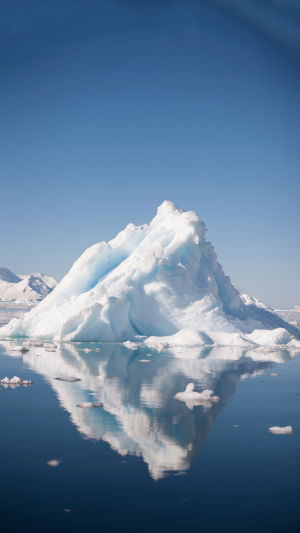Glaciers are certainly a fascinating topic when we talk about one of nature's most magnificent wonders. Standing in the mountains and valleys of the earth, they are majestic and breathtaking. With its majestic landscape and profound influence, glaciers have attracted the attention of countless explorers, scientists, and tourists.
Let's take a deep dive into these icy and beautiful wonders of nature.
Glaciers are huge bodies of ice formed from snow and frozen water. They form under harsh climatic conditions in alpine regions or polar regions, requiring long periods of accumulation and high pressure. Over time, the snow gradually turns to ice, and after years of compression and movement, a glacier is formed.
The formation of glaciers requires a special climatic environment, that is, a cold and humid climate in which the annual precipitation exceeds the annual evaporation to accumulate enough snow.
Glaciers are not just a magnificent natural feature, they are also one of the important reservoirs of freshwater resources on Earth. Water from melting glaciers flows into rivers and lakes, providing a constant supply of water to surrounding areas.
In addition, glaciers also play an important role in global climate and environment. They reflect the sun's rays, slowing down the rate of warming of the earth's surface, and acting as a natural greenhouse effect regulator.
However, in recent years, with the intensification of global warming, glaciers are facing serious threats. The increase in temperature leads to faster melting of glaciers, and the volume and length of glaciers continue to decrease. This has serious impacts on both ecosystems and human society.
The retreat of glaciers in some areas has reduced water resources, threatening people's lives and agricultural development. Melting glaciers also contribute to rising sea levels, exacerbating the risk of flooding in coastal areas.
Facing this daunting challenge, the global community must take action to protect and sustainably use glacier resources. Mitigation of climate warming is one of the top priorities. The international community needs to strengthen cooperation to reduce greenhouse gas emissions and promote the development and use of renewable energy. Additionally, scientists need to delve deeper into how glaciers form and evolve to better understand their impact on the Earth's system.
As ordinary citizens, we can also contribute to glacier protection. Reducing carbon emissions, saving energy, and promoting environmentally friendly travel are all actions that we can implement in our daily lives. It is also very important to strengthen the management of tourism development in glacier areas and ensure the sustainable use of glacier resources.
A glacier is an extreme environment with little vegetation or animals able to survive on it. However, on the edges and downstream around glaciers, some organisms have adapted to such conditions and can survive on glaciers.
1. Glacier algae: Glacier algae are microscopic algae that live on glaciers. They can use sunlight for photosynthesis and are adapted to extremely low temperatures and high radiation. Glacier algae usually have green, red, or orange pigments, and they form distinct stains on the glacier's surface, sometimes even forming pink "blood snow".
2. Glacial worms: Glacial worms are a class of tiny invertebrates that live in glaciers and permafrost. They can tolerate extreme cold and drought conditions. Glacier worms are soft and resistant to freezing and thawing and can live and reproduce in glaciers.
3. Glacier mites: Glacier mites are a class of tiny arthropods that mainly live in lakes, rivers, and springs under glaciers. They feed on algae and other microbes and have adapted to low temperatures.
These organisms can survive in the extreme environment around glaciers, and they play an important role in the balance and function of this ecosystem.
However, threats to these creatures are also increasing due to the effects of climate warming and melting glaciers. Therefore, protecting glacier ecosystems is critical to maintaining the survival of these organisms.
Glaciers are some of the most majestic natural features on Earth and an essential part of our ecosystem. Each of us has a responsibility to protect and pass on this natural heritage.
By taking action, we can ensure that future generations can also enjoy these stunning icy beauties while protecting the sustainability of our planet. Let us work together to protect this unique natural wonder.





